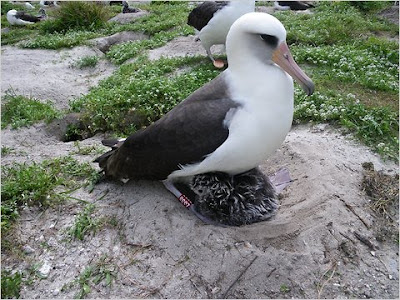
Some of the grassland in Alberta's TRL land could look like this if the deal goes through
A couple of weeks ago I wrote a post about the Alberta government giving 130 square miles of the province's Crown native grassland to two rural counties. These "Tax Recovery Lands" are part of Alberta's natural heritage and for thousands of years have supported rich ecological communities characteristic of the northern Great Plains. Communities that are among the most endangered on the continent.
In the past few weeks, Alberta conservation organizations have been issuing news releases, sending letters and emails, and pressuring the government to come to its senses and stop the giveaway scheme. And a scheme it is, for the motive behind this move is both political and tactical. The Stelmach government in Alberta is turning up some of the worst popularity figures of any Conservative government in that one-party province's history. They are hoping that giving land away to rural counties will win them back some support. But buying votes may not be the primary purpose of the giveaway.
It is not a coincidence that this strategy of giving away TRL came up shortly after their efforts to sell a large piece of native grassland in the region were thwarted by a public outcry. The land was to be converted to irrigated potato crops for a potato chip corporation. "Potatogate" people called it because the Stelmach government came under sharp criticism for proposing the sale. Conservationists now believe that this TRL deal is an attempt to out-manoever opposition by passing the land into the hands of counties who only answer to their local rural ratepayers and will do what they like with the land--sell it to the highest bidder and let them turn it into centre-pivot irrigation farmland.
If this is not what is happening, then why won't the Alberta Government come clean and declare exactly what pieces of land will receive some kind of protection and what pieces will be sold without any restrictions? Why won't they tell their citizens whether any environmental assessment has been done on the TRL lands that are included in the deal? With no disclosure, no transparency, and no consultation, can anyone fault us for suggesting that something nefarious is going on here?
Adding to the breach of public trust, there is the issue of the Alberta's "South Saskatchewan Land Use Framework," which the government says will ensure “a healthy economy supported by our land and natural resources; healthy ecosystems and environment; and people-friendly communities with ample recreational and cultural opportunities”.
Albertans were promised that this would be in place for effective land management. But in the middle of the process the government decides unilaterally to just hand off 130 square miles of grasslands vital to prairie biodiversity. Land use plans full of empty promises and motherhood statements about healthy ecosystems will not do much for the Sprague's Pipits or pronghorns who find the landscape has been turned into irrigated cropland.
The bottom line is that the Alberta Government is putting at risk an enormous piece of prairie habitat and the many plants and animals that depend on it. The stretch of grassland threatened by this deal is roughly the same size as the Columbia Icefields and larger than Elk Island National Park.
Here is a map an Alberta friend sent me showing (in bright green) the sections that are being given over to the counties.

No matter where you live, I encourage you to let the Alberta Government know what you think about this boondoggle:
Write a letter or email to the Premier and to his Minister of Sustainable Resource Development. Here are the addresses:
The Hon. Ed Stelmach
Premier of Alberta
Room 307, Legislature Building
10800 – 97th Avenue
Edmonton, AB T5K 2B6
Email: premier@gov.ab.ca
Honourable Mel Knight
Minister of Sustainable Resource Development
Alberta Legislature Building
10800 – 97 Avenue
Edmonton, AB
T5K 2B6
Phone: 780 415-4815
Email: srd.minister@gov.ab.ca












